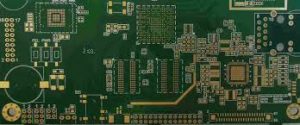HDI Printed Circuit Boards
There’s a growing need for special solutions to handle excess heat in electronic products. Rapid technological advancements are driving the need for new approaches. PCB designers have a wide variety of methods available to reduce the amount of heat produced by their boards and improve the board’s thermal properties. Proper design techniques and manufacturing processes can significantly enhance a circuit board’s performance.
Using proper traces and spacing allows designers to control impedance and minimize the amount of heat generated. The use of a high-performance finite element multiphysics simulation tool to analyze how airflow and heat move throughout the board is another effective approach.

Optimizing the thickness of a hdi printed circuit board to provide adequate insulation is also important. This can minimize the amount of heat transferred to other components. In addition, utilizing larger-than-required trace widths can reduce the amount of heat that is generated.
Thermal Management in HDI Printed Circuit Boards
In some cases, modifying the material used for a circuit board can help. For example, replacing FR-4 with an alternative substrate with higher thermal conductivity can increase a board’s ability to dissipate heat. In addition, using a thermal via (plated or unplated) to connect different layers of the PCB to each other can increase the flow of fresh air and help disperse heat.
Keeping the temperature of the circuit board within acceptable ranges can dramatically reduce the potential for failure due to overheating. This can be accomplished by utilizing appropriate cooling methods, such as a copper coin heatsink or direct contact with the cooling surface of a metal heat sink. In addition, arranging sensitive components away from those that generate the most heat can mitigate overheating and other temperature related problems.
As the technology continues to evolve, more and more devices are being packed into smaller spaces. This makes it challenging for traditional cooling methods like heat sinks to be used because they take up too much space. In some cases, the best solution is to utilize a thicker PCB with a larger surface area to dissipate and distribute heat more effectively.
HDI printed circuit boards are typically found in devices that require high performance in a limited space, including cellular phones, laptop computers, touch screen tablets, digital cameras and 4G network communications. They can also be found in military applications such as avionics and smart munitions.
The cost of an HDI circuit board depends on a variety of factors, including the type and number of vias, through-holes or microvias, the amount of copper and the type of stack up. The number of sequential laminations required for blind and buried vias also affects the overall cost. By planning orders well in advance, companies can significantly reduce their costs by working with a supplier that offers low minimum quantities and quick turnaround times. This can lead to increased cost-effectiveness for a high-density circuit board.